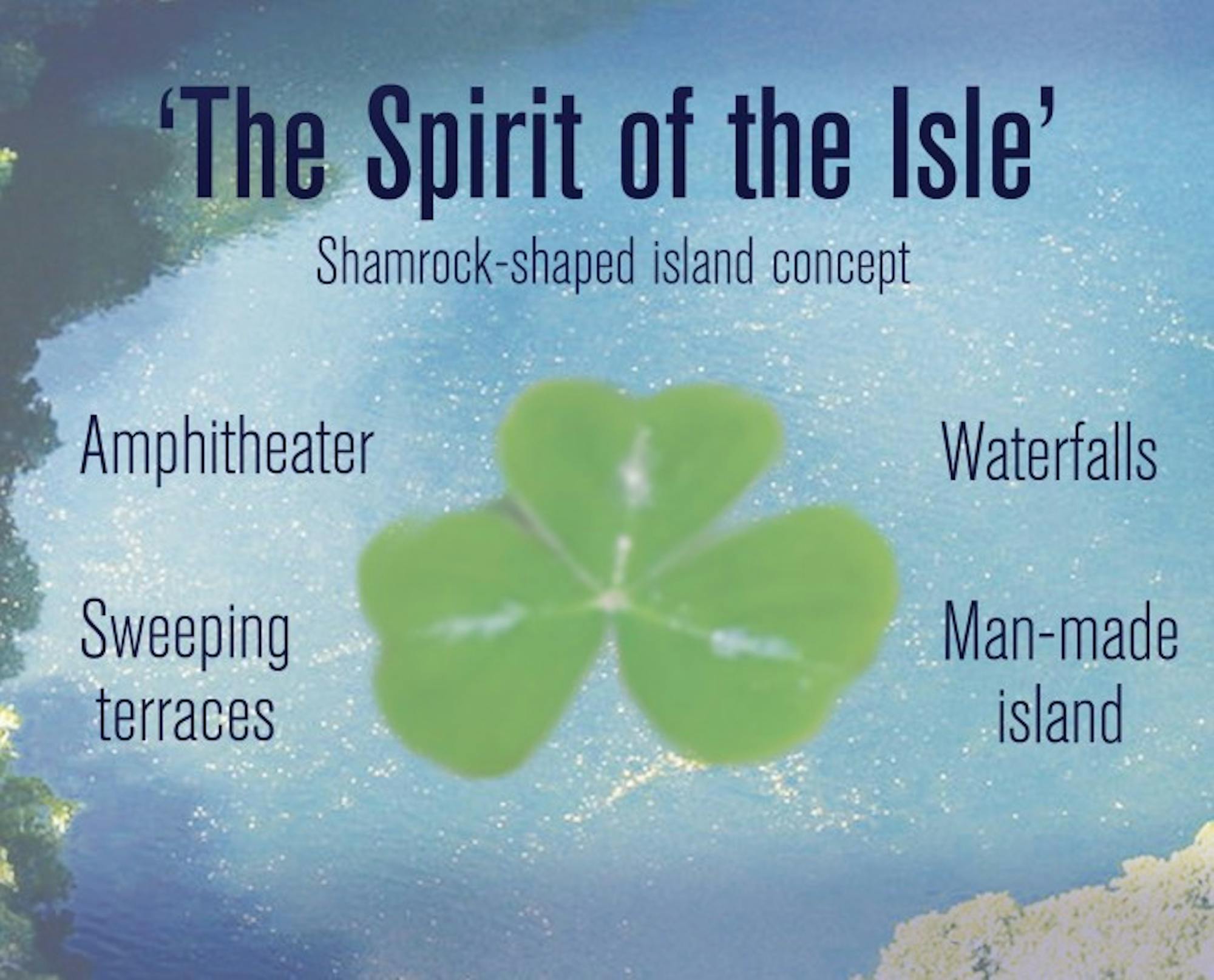Last semester, seniors Mark Davidson, Jessica Klouda and Erin Rice and graduate student Madeline Zupan registered for design professor Scott Shim’s interdisciplinary Collaborative Product Development course, where they were randomly assigned as a group for the semester’s project. The four students were runners up in the Walt Disney Imagineering Imaginations Design Competition on Jan. 27.
(Editor’s Note: Erin Rice is a former graphics editor for The Observer)
“We were thrilled that the results of months and months of work and collaboration resulted in such a fantastic outcome,” Zupan said. “Truly, just making it as far as we did — in terms of becoming finalists — was absolutely an honor in and of itself.
“This competition brings in some of the most highly respected talent from designers and engineers across the country and so to even be included in this cohort was remarkable.”
The competition charged teams with the task of designing a space in respect to their college or university. The Notre Dame team’s project, “The Spirit of the Isle,” was conceived as a shamrock-shaped island in one of the lakes on campus.
“Ultimately, based on the prompt, we decided to look into the magic of Notre Dame, and we looked into designing our space around the lakes, so that’s why we chose an outdoor space,” Rice said. “When we were determining that ‘favorite spot’ on campus, we did a lot of this through generative research, student interviews, surveys, etc., and so that was basically our process in how we got there.”
Klouda said the position of the lakes offered a great design opportunity.
“We found that a lot of students like to go near the lakes and relax by the lakes,” she said. “ … We thought this was a really great place because there’s great views of the Dome from there, and it’s near the Grotto, so the spirit of campus is all right there and it’s a great vantage point.”
The team also created a history for the island based on the founder of Notre Dame.
“Our idea focused around a story that we created that was based on [Fr. Edwin Sorin] as if he were a sorcerer,” Rice said. “He comes across the plans many years ago, and he designs this island to protect future generations of students, faculty and visitors so they can enjoy the outdoor space during all of the seasons.
“That was the basis of the story of our space, and we divided our space into five main areas. We also integrated into the design an app and a lot of technology — like futuristic or already-existing technology.”
During their time in Shim’s class, the team spent a lot of time conducting research, interviewing students and issuing surveys.
“One of our activities was mapping out the physical journey through campus and seeing what is a typical visitor’s trip like, what landmarks are they hitting, where are they stopping, where are they passing through,” Zupan said. “Then we mapped the exact same journey through a Disney theme park, and saw that there were striking similarities in the paths that people take — Notre Dame is the Disneyland of college campuses. When we arrived at that conclusion, the ideas started to flow from there.”
Davidson said the purpose of the island was to help guests “destress.”
“With our research, when we were trying to determine what students and guests of campus really do to destress, there really wasn’t a consensus, so we developed our island into a multi-use space,” Davidson said.
Part of that multi-use space is a terraced amphitheater and areas for small groups to gather.
“Part of the design is a giant amphitheater that, rather than having a raised amphitheater, it sinks into the lake, so it doesn’t obstruct any views of campus,” Zupan said. “It was a huge design imperative that we don’t make this big, clunky design that doesn’t integrate and doesn’t flow well. So that’s why most of the project is either flush to or below into the lake.”
Zupan said the first submission did not allow teams to use the name, logo or any other trademarks, to avoid biases in the judges.
“It was really a challenge to make it as general as possible, but also specific to the University, so you had to balance the two,” she said. “But Notre Dame, in terms of the inspiration, we were so heavily inspired by the campus and the beauty.”
After making it through the first submission and past the semifinals, the team joined 17 other finalist students on five teams — chosen from over 300 entries — on the Imagineering campus in Glendale, California, for a final week of presentations and career preparation.
“Throughout the course of the week and when we first arrived, we were blown away by the other teams’ projects, and we had the chance to meet these other teams,” Rice said. “So, in comparing ourselves to the other teams, we didn’t really know how to do that.
“When we found out we got second, we all just looked at each other and went up to receive our reward and came back down and had a group hug, and it was very spontaneous. We were extremely excited, and I wouldn’t say surprised, because I think we’re all very confident in our work, but everyone was so talented. It was amazing.”
The team members said their different backgrounds — mechanical engineering, design, industrial design and entrepreneurship — helped the team collaborate across disciplines and get at the true spirit of the competition.
“That’s what I think ‘Imagineering’ is — it’s groups of people who think incredibly differently and come together to create something,” Rice said. “I think that’s the future of the workplace.”













